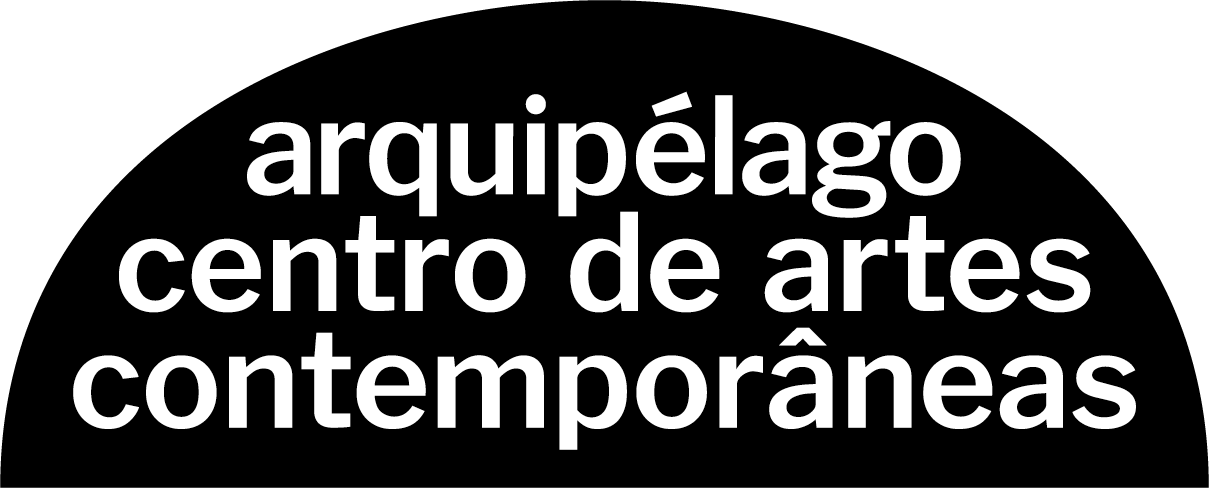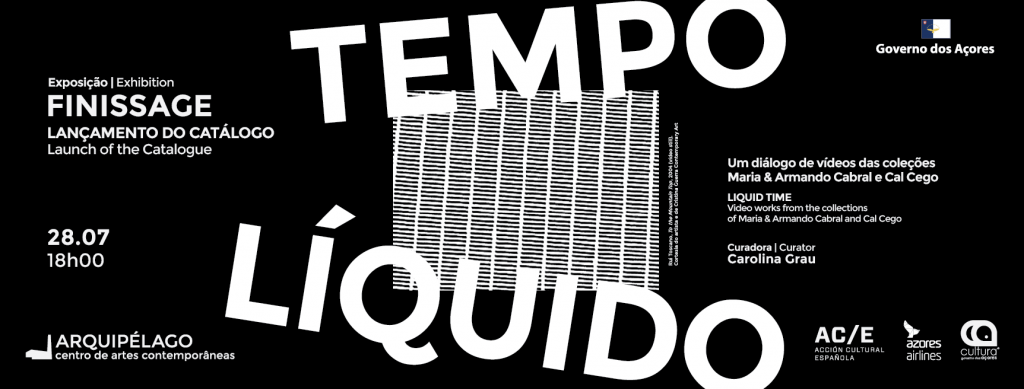Finissage and launch of the catalogue
of the exhibition
TEMPO LÍQUIDO
28 july
6 pm
FINISSAGE AND LAUNCH OF THE CATALOGUE | 28 July | 6pm
“LIQUID TIME” is the first and great exhibition that ARQUIPÉLAGO – Contemporary Art Center dedicates to Video Art. The international curator Carolina Grau gathers fourteen videos from international artists that reflect specific decades of contemporary society that questions the current and constant state of change, a “liquid state”. It’s the first time in Portugal that two private collections of Iberian Peninsula are simultaneous exhibited: Maria & Armando Cabral Collection, Lisbon and CAL CEGO. Contemporary Art Collection, Barcelona.
The exhibition includes iconic works from Bruce Nauman, Doug Aitken, Douglas Gordon, Peter Fischli & David Weiss, as well as Alicia Framis, André Romão, Cory Arcangel, David Bestué & Marc Vives, Ignacio Uriarte, João Onofre, Muntadas, Nuno Cera, Perejaume and Rui Toscano. Acción Cultural Española (AC/E) supports the the catalogue through the Programme for the Internationalization of Spanish Culture (PICE).
The Finissage and launch of the catalogue | 28 July | 6 pm
Guided visit to the exhibition Liquid Time, with the curator Carolina Grau.
Launch of the catalog Liquid Time, with a presentation by Fátima Marques Pereira, the director of the Arquipélago – Contemporary Art Center, Carolina Grau, the curator of the show, and Montse Badia, the artist director of the Cal Cego – Colección de Arte Contemporáneo.
Screening of Teló Seguit, a video by the artist Perejaume.
LIQUID TIME
Video works from the collections of Maria & Armando Cabral Collection and Cal Cego.
Liquid Time is the first large exhibition exclusively focused on video in the Arquipélago — Contemporary Art Center. The show presents works by fourteen international artists that reflect upon and question this “liquid time,” an expression coined by the sociologist Zygmunt Bauman (1925–2016), who died recently. Bauman has theorized upon the change from a “solid” to a “liquid” Modernity, in which everything is fluid and where forms and conventions become temporary, short-lived, and obsolete. A highly digitized and continually changing contemporary world where nothing remains and everything is permanently changed by a never-ending flux of information. A landscape dominated by globalization, by temporality, in which inequality has replaced our welfare society.
The exhibition comprises fourteen videos that reflect different decades of our changing society, tracing a journey through the turn of the century we have experienced in our lives.
The 1980s were characterized by a rise in the tensions of the Cold War under the growing shade of the nuclear threat, and by the laying out of the foundations for a neoliberal economy. This period is represented by two iconic works: the famous film by Peter Fischli & David Weiss, a continuous chain of casual relations between various objects, and Bruce Nauman’s piece, that shows us how a simple prank can degenerate into a spiral of violence. The 1990s were marked by the fall of communism and by the influence of technology, culture, and music in our society. Muntadaspresents an analysis of the gesture as a symbol of power, while Doug Aitken choreographs the isolation of the youth in the big cities.
The first decade of the new century is defined by the “war against terrorism,” by the economic crisis, by the rise of Latin America, and by the generalization of the internet, of mobile phones and computer games, which have brought radical changes to our social relations. Throughout this decade, we will witness a boom in the use of audiovisuals among the newest generations of artists, which are here represented by Alicia Framis, who carries out a secret strike inside a bank; Bestué & Vives, with domestic actions that question the way we perceive our lives; Ignacio Uriarte, who, between order and disorder, confronts us with all the possibilities of an archive; Douglas Gordon and his image depicting the fragility of an elephant, the symbol of memory, playing dead and getting up; Cory Archangel, who creates one of his first Self-Playing games using a hacked PlayStation; Nuno Cera and the symbolic assassination of one of the most iconic buildings of Modernism and of its values; and Rui Toscano, with his recreation of the growth and rise of the main Brazilian cities in the format of a sound-animation.
In our present decade, still carrying the brunt of the economic crisis, we witness the political and social transformations rocking the Arab countries, we see the European Union plunge deeper into its crisis, all this while new technologies keep introducing dramatic changes into our society, culture, and labor relations. In this context, João Onofre offers us a metaphor of the loneliness of the contemporary individual, while André Romão reminds us of the failures of our historical past.
All the artworks in the show belong to one of these two collections, from Spain and Portugal: the collection CAL CEGO. Colección de arte contemporáneo, Barcelona, which was created by Roser Figueras and Josep Inglada, who started collecting art in 2006 under the advice of Montse Badía; and the collection of Maria and Armando Cabral, who started collecting Portuguese and international art in 2006.
Carolina Grau
Calendar of events Exposições
-
-
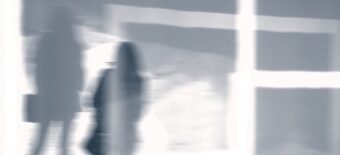
-
19 jul. 2025
16h00O Tempo de Estar
-
-
-

-
19 jul. 2025
16h00Produção Artesanal Portuguesa:
a atualidade do saber-fazer ancestral
-
-
-
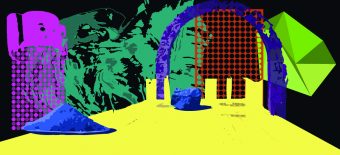
-
20 fev - 29 ago 2021
Sob o peso frágil
Da pálida abóbada
-
-
-
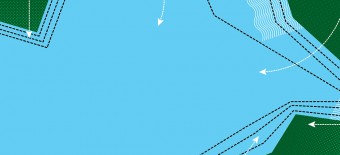
-
23 abr - 12 out 2021
Exposição
PRAZER DO ESPÍRITO
E DO OLHAR
Paisagem e Viagem
em Arte Portuguesa
da Coleção Arquipélago
-
